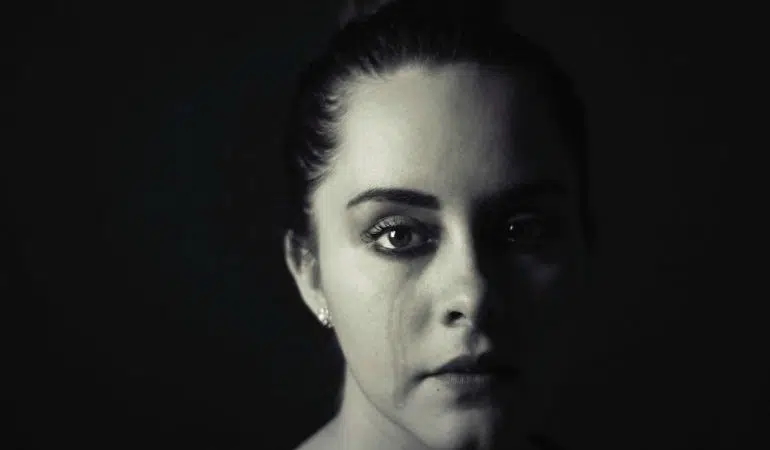As Illinois and the world at-large begin to take steps towards recovery from the COVID-19 pandemic, the question has come to the forefront regarding long-term effects of the crisis. WMBD News’s Jeremy Scott sat down for a Q&A with UnityPoint Health-UnityPlace President Dr. Ted Bender regarding the mental health issues the crisis could inflict. This interview has been edited and condensed.
JEREMY SCOTT: I’ll start off by telling you what got me interested in picking your brain about this. First a disclaimer: I am not the mental health expert here, so if I’m off-base by anything I say, please call me out on it. But I am a firm believer any of us who lived through 9/11 and were old enough to be conscious of it now have some form of PTSD, whether we realize it or not.
TED BENDER: You know, I’m glad you brought that up. People throw that “PTSD” term around pretty lightly. I think what’s likely is for people to have symptoms similar to people with post traumatic stress disorder, but not everybody will have the full-blown diagnosis, if that makes sense. But, symptoms of the disorder are going to be much more common [than before the pandemic].
I’ve been doing a lot of research into past pandemics and similar situations where quarantines were used kind of widespread, and it does seem like people who are quarantined, especially healthcare workers, during the medical situation, are much more likely to suffer from these kind of significant effects. Short-term, or as much as three years later.
JS: You say they’ll be most at-risk for these symptoms, but could you safely call it a full-on diagnosis, or are you still sticking to saying they’ll have symptoms of it, but not necessarily a diagnosis?
TB: It depends. I think a lot of them will have the full-blown diagnosis. And there’s a host of other issues that come along with being quarantined, especially healthcare workers who are quarantined. Exhaustion, detachment from others, anxiety, irritability, sleep disorders, and also deteriorating work performance in the future as a result of that kind of exposure to trauma.
JS: So what do you expect will cause the PTSD or symptoms of PTSD we get from this pandemic to rear their ugly head? By that, I mean, what sorts of scenarios in the future will trigger PTSD symptoms within us?
TB: Well, I think that’s going to depend on a lot of things. When trying to do research on similar past situations — SARS is the one I keep coming back to, because it was sort of similar to what’s going on right now — it’s also going to be very difficult to predict the outcome of this pandemic, because in a lot of ways, this is much more widespread, affecting more people, and is still ongoing. We’re still in this kind of stay-at-home mode, and so many people across not only our country, but the world, are being affected by this. So, I think you’re going to see in the future, when people are researching the effects of this, some of the same patterns we’ve seen in the past, like I’ve mentioned, but there could also be new, emerging patterns.
More widespread post-traumatic symptoms, more widespread sleep disorders, irritability, depression, suicidality, increases in substance use disorders. I think it’s too early and too difficult to tell just how significant the impact of this particular pandemic will be. But, I think we can definitely expect the healthcare workers who were in the heaviest hit areas who may have had to quarantine themselves due to risk of infection or infection to be the “ground zero” for all the research coming up and will be the hardest hit.
JS: What sorts of symptoms should we be wary of in such a way, when they occur, we should tell ourselves “that’s the post-traumatic stress talking?”
TB: We’re all going through a really heavy burden. Whether you’re a healthcare worker or not. If you’re just stuck at home in quarantine and can’t work. I think there are some things to watch out for, for sure. In myself, I’ve noticed a slightly increased startle response. If you’re not sure what that means, it just means “a little more jumpy.” Whereas I’m not usually a jumpy person, I get kind of startled more easily.
I think the common things you really want to watch out for are, for one, depression. If you feel like your mood is down or significantly worse than normal for a period of two weeks or longer, or you start losing interest in things you used to enjoy like spending time with family, or yard work, or whatever the case may be, it’s probably time to start talking to somebody. That two-week marker is one of those indicators of a potential depressive episode. Also, anxiety. We talked about post-traumatic stress. PTSD is in the family of anxiety disorders. So if you find yourself being extremely nervous, fearful of future events, losing sleep because your mind is racing at night, again, it might be time to talk to somebody if it’s consistent and persistent over time. Any disruptions in sleep, increased irritability, depression, and anxiety are all trauma-related symptoms.
JS: It’s interesting you mention there’s a two-week period we need to be aware of, and if the symptoms don’t subside after the two weeks, it’s time to talk to somebody, because with this coronavirus, they say it incubates for 14 days. So it’s interesting that’s the marker for mental health like it is for physical health.
TB: The two-week indicator is in there for a very specific reason: everybody feels down or depressed some days. We all have bad days. But, having a bad day or two does not indicate a clinical diagnosis, per se. It’s that persistence over time that indicates a potential problem.
JS: You mentioned historical precedent in terms of data for PTSD after other big pandemics, like SARS. I don’t know if the mental health studies go as far back as the Spanish Influenza, but any other big events like that that have triggered similar responses as SARS?
TB: You bring up a real good question about the Spanish Flu of 1918. I don’t know if there is any good data from that time period. It certainly would have been collected a lot differently back then to look at. Most of the studies I’ve looked at have been studies on where people were quarantined for some reason. There was another study I looked at for people who worked with horses, where there was an equine outbreak of some sort. So we’ve been able to look at the effects of quarantine on people in these various and different scenarios. A lot of the psychological impact of quarantine has shown similar patterns, whether it was SARS, or equine-related, or whatever the reason. We see a lot of the same outcomes.
JS: I don’t know if this qualifies as PTSD or PTSD-like symptoms, but my great-grandmother, who survived the Great Depression, used to do things even into her 80s and 90s like pour a glass of milk, drink half of it, and then refrigerate the rest for later. Do you see us adopting habits like that?
TB: That’s an interesting point. I can definitely see that as being kind of a longer-term — I don’t know it’s a consequence or adaptive behavior; it’s difficult to argue for or against either of those these days — but you’ve already seen this pandemic turn some people towards hoarding behavior. If you’re familiar with hoarding disorder, it’s a very debilitating condition where people refuse or have the inability to throw things away, and often in severe cases, have been buried alive in their own house. Now, I don’t want to say everybody’s going to start doing that, but early on, we did see and are still seeing a significant amount of hoarding behavior with items like toilet paper, which was the first one, and now other items are creeping off the shelves. I’ve read recently flour is a high-impact item.
I could see more people taking a more proactive approach to being ready for situations like this. Some of the “preppers” out there are probably saying “I told you so” right now, but maybe taking some of their advice and having longer-term food supplies on-hand. I do think that might become a lot more commonplace. Whereas right now many people have like a week or two’s worth of food in the house, more people might start having a couple months of food in the house. So, things like that, I can see increasing, kind of like your grandmother’s milk scenario.
JS: Last question. Any ways we can mitigate the damage right now?
TB: Step one is where we really need to put most of our focus, and that’s those healthcare workers who were in the hardest-hit areas. Regardless of if they went through quarantine, themselves, or not, those are the areas I would start with, and be really proactive with getting staff the help and resources they need for mental health, early and often, and having support of their workplaces. For the general public, we’re also really struggling, and I think it’s important to watch out for signs and symptoms, like you asked about, with depression and anxiety. If you’re experiencing things like that, don’t just wait to see if those things will go away. If it’s persistent and causing you problems you didn’t have before in your daily life, reach out and get help. It’s better to treat it faster and earlier than to wait until you’ve been dealing with it for a long period of time.




